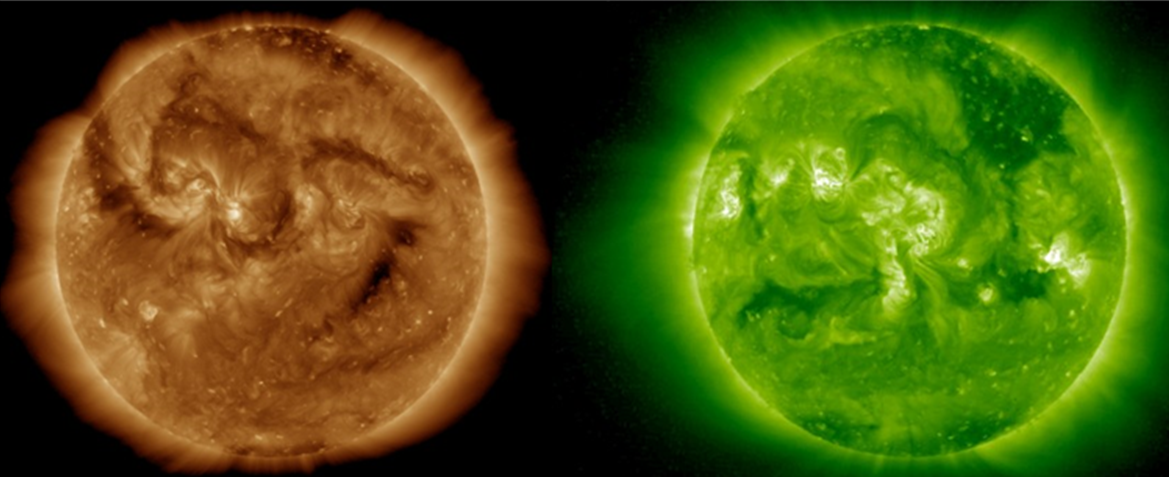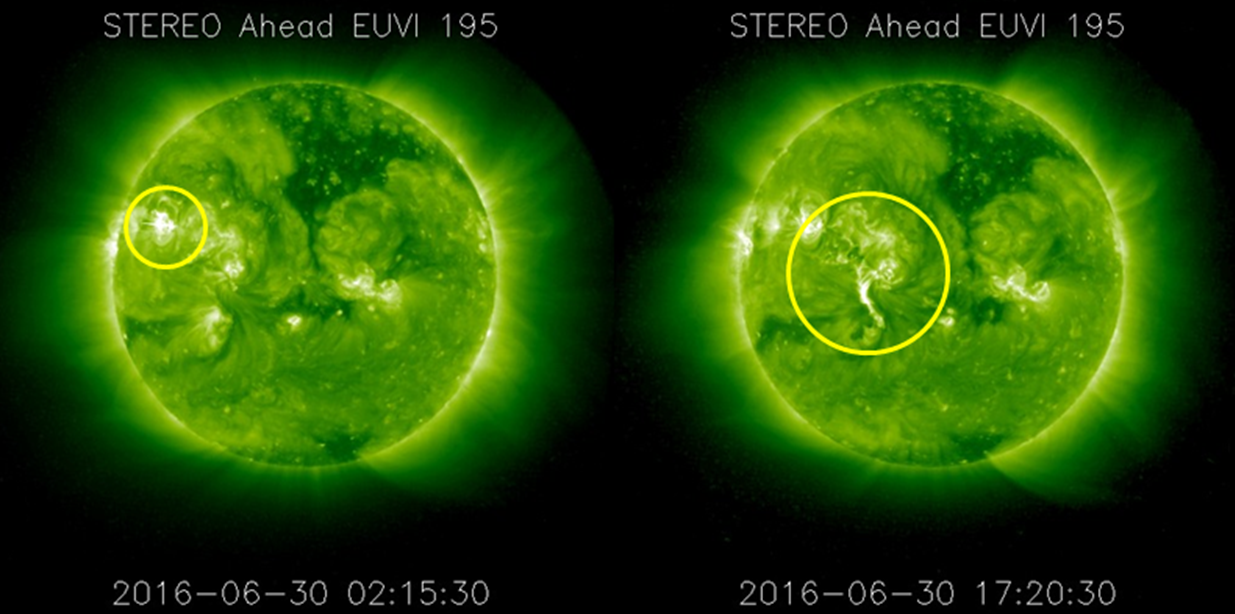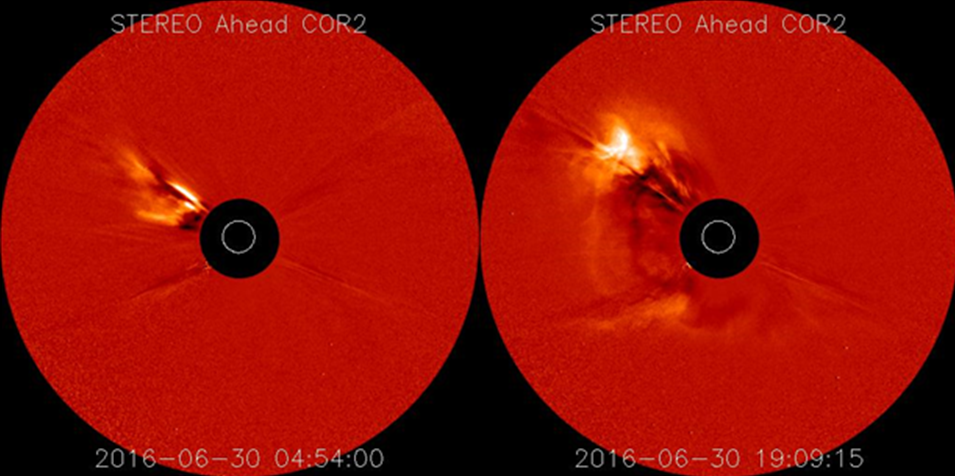Once again, solar observers were treated on a blemishless golden orb, with the preliminary sunspot number being "0" from 25 June onwards. While the earth-facing solar hemisphere had apparently already left for the summer holidays, the Sun's backside still showed some signs of life, displaying a few active regions. Extreme ultraviolet imagery underneath shows the difference between the earth-facing side and the Sun's farside as seen by respectively SDO (left; AIA 193) and STEREO-A (right; EUVI 195) on 1 July. The dark patches represent coronal holes, the bright patches correspond to active regions (not necessarily sunspot groups).

Interestingly, there was quite some flaring activity in these regions on 30 June. Strong flaring was observed in an active region located in the northeast solar quadrant as seen by STEREO-A during the 01-05UT interval. Then, during the afternoon of the same day, flaring activity picked up in the regions more to the disk's centre culminating in a major eruption around 17:00UT. The two periods of flaring activity are indicated in the STEREO-A imagery underneath.

Both flaring episodes were associated with coronal mass ejections (CME). The CME related to the major eruption had a plane-of-the-sky speed between 350 and 500 km/s, and had a STEREO-A directed component. The spacecraft recorded a shock in the solar wind speed (jump from 470 to 620 km/s) and in the strength of the magnetic field B (about 19 nT) around 20UT on 2 July.

A movie based on STEREO imagery can be found here. The concerned active regions are expected to round the east solar limb -as seen from Earth- by 6 or 7 July. Hopefully, they'll still have some juice left by then...





